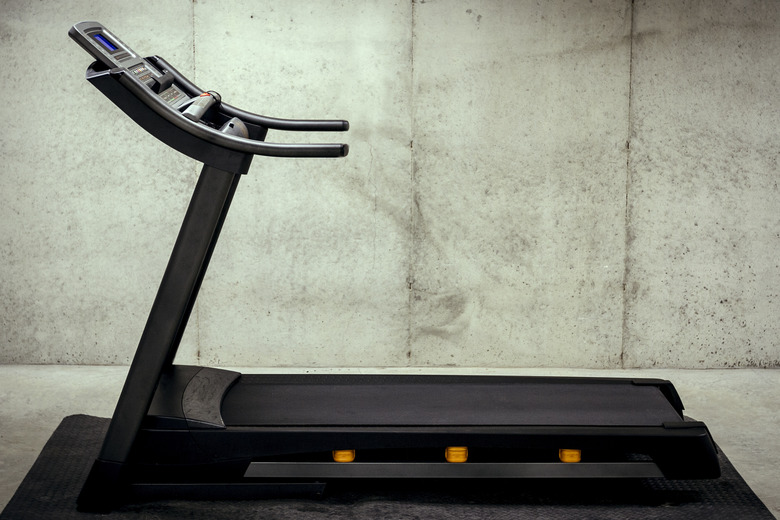How To Safely Move A Treadmill To The Basement
We may receive a commission on purchases made from links.
So you're finally building your perfect in-home gym in the basement and need a treadmill down there for cardio. Or maybe the treadmill that you bought for your living room didn't actually revolutionize your workout game the way you planned, so it's getting moved into basement storage. Whatever the motivation, moving a treadmill downstairs is obviously a bit of a tricky task and not one you want to attempt alone.
Start With Due Diligence
Start With Due Diligence
Moving a treadmill that's already set up is a process that needs to be planned. Making it up as you go along could lead to you damaging the treadmill or your walls, or someone may get hurt. The first order of business is consulting the user manual for specific directions for moving and/or disassembling the unit.
Most treadmills made for home use are designed so the frame and handrails can be folded down or removed. If you don't have the original user manual, find a digital version online by searching for the brand and model number of your treadmill. Unplug the treadmill from the power and follow the manual's directions for disassembly. Optionally, wrap it in moving blankets or other blankets at this point to protect both the treadmill and your walls in case of a collision.
Before moving the treadmill from its current position, enlist someone to be your moving buddy. Many newer models are designed to be sleek and portable, but even a foldaway treadmill is probably going to be too unwieldy for one person to safely move it alone. The best way to move a treadmill is with two people. You might even ask a third person to walk ahead of you to act as a spotter and alert you if you're about to hit a wall or step on something.
Tip
Assuming you're able to fold down or disassemble the treadmill, it should fit through a doorway and down a basement staircase. If you can't take it apart and have to move the treadmill with the handrail still attached, measure the height and depth of the unit and measure the narrowest point on the basement staircase. If the staircase has a tight turn, it may be too narrow for the treadmill to fit through.
Move the Treadmill to the Stairs
Move the Treadmill to the Stairs
If your treadmill has wheels, moving it to the top of the basement stairs is pretty simple once you've cleared any furniture and rugs out of the way. To move a treadmill without wheels, you and your partner may either carry it to the stairs or use a heavy-duty furniture lifter and sliders to transport a heavy treadmill to the basement stairs. Depending on the size of your treadmill, you may need to take the door out of the doorjamb and possibly remove the jamb itself for it to fit through. Finally, turn on all the basement lights to illuminate your path. Check the stairs carefully to make sure they're clear of any obstructions.
Moving a Treadmill Downstairs
Moving a Treadmill Downstairs
If you and your moving buddy want to carry the treadmill downstairs, be mindful to grip the sides of the treadmill itself and not the belt, which may move in your grip. Lift with your knees and move slowly down the stairs, resting the treadmill on the stairs if either person needs a break.
Alternatively, you may be able to use a stair-climbing dolly to move a treadmill. These dollies are designed with sets of three wheels that rotate to literally climb stairs. Secure the treadmill to the dolly using lashing straps and position the dolly at the top of the staircase so the handles and wheels are facing the stairs. Standing at the top step, tilt the dolly toward you and move slowly down the stairs while your helper follows behind in case anything goes wrong.
